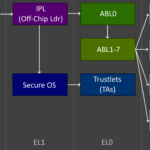Enlarge (credit: Aurich Lawson | Getty Images)
The TV business isn’t just about selling TVs anymore. Companies are increasingly seeing viewers, not TV sets, as their most lucrative asset.
Over the past few years, TV makers have seen rising financial success from TV operating systems that can show viewers ads and analyze their responses. Rather than selling as many TVs as possible, brands like LG, Samsung, Roku, and Vizio are increasingly, if not primarily, seeking recurring revenue from already-sold TVs via ad sales and tracking.
How did we get here? And what implications does an ad- and data-obsessed industry have for the future of TVs and the people watching them?Read 44 remaining paragraphs | Comments…
External feed Read More at the Source: https://arstechnica.com/?p=2027078
